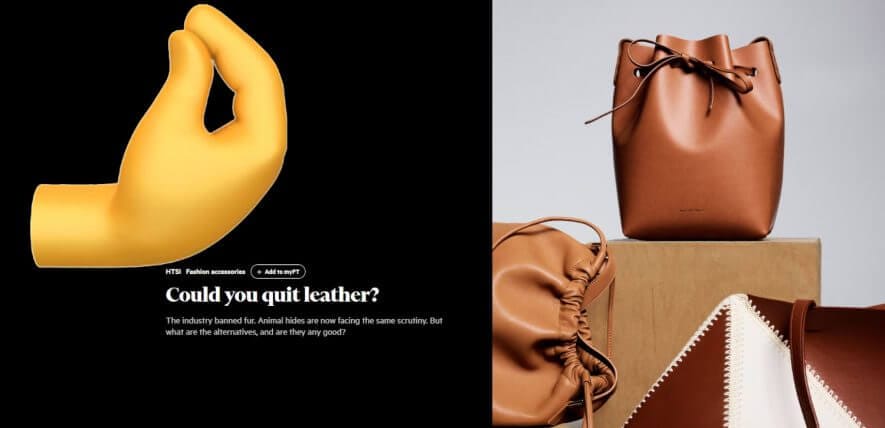The rhetorical question that titles the Financial Times in-depth piece speaks volumes about the author’s intentions: “Could you quit leather?” We, then, respond with another rhetorical question: is it any coincidence that a piece that purports to be a lively endorsement in favour of veg alternatives talks, essentially, about failures? No. On the contrary, it is the unintentional unveiling of a truth: if the next-gen textiles designed to replace leather have not yet succeeded, it is because they cannot do so.
The (not-needed) endorsement
The Financial Times article is as enthusiastic as it is inaccurate. On the subject of leather and tanning, it rattles off all the inaccuracies we are used to reading about when it is those who support vegan alternatives who write. Such as? That the environmental impact of leather is weighed down by the carbon footprint of animal husbandry. Wrong: tanning collects and ennobles a by-product of animal husbandry, which follows independent production dynamics, and indeed prevents the same by-product from becoming an industrial waste to be disposed of in landfills or incinerators. More.
The FT writes that it is incorrect to call leather a “natural product” because in some processes a plastic film is applied to its surface. Well, “more natural” will be “next-gen” textiles also composed of 90% synthetic materials. For a detailed debunking, we refer you to the LinkedIn post by Kerry Senior, director of Leather UK. Because here we would like to focus on another aspect.
A history of failure
“For those who don’t want to use leather, there has never been as much choice as there is today,” concludes the FT. Which cannot, however, be silent about the break that Bolt Threads had to take with Mylo. That is, the material derived from the vegetative apparatus of mycelium that has not reached “commercial and industrial scalability” despite hundreds of millions of dollars of investment over more than two decades. As in those thrillers where the clue to the solution of the case is there for all to see, but only the most astute investigator has the acumen to recognise it, the author blurts out en passant the argument that closes the discussion on the competitiveness of alternative materials.
“It will still be some time before they are available on a commercial scale and at competitive prices”, he writes. “And they may still have some performance issues to solve”. Which ones? A designer who prefers to remain anonymous explains to FT “Mylo was incredibly difficult to work with. It’s stiff, so it breaks very easily and you can’t sew it. When we used it for trousers, we had to glue it to jersey, but it was so hard that the model in the shoot couldn’t sit down”. With Mylo it is easier to make bags, claims the same anonymous source. Maybe so, but in the meantime, FT acknowledges, the Hermès bag in a similar material (MycoWorks) never made it to the shops: and maybe that’s no accident either.
Read also:











